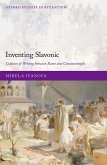Seeking Sanctuary explores a curious aspect of premodern English law: the right of felons to shelter in a church or ecclesiastical precinct, remaining safe from arrest and trial in the king's courts. This is the first volume in more than a century to examine sanctuary in England in the fifteenth and sixteenth centuries. Looking anew at this subject challenges the prevailing assumptions in the scholarship that this 'medieval' practice had become outmoded and little-used by the fifteenth and sixteenth centuries. Although for decades after 1400 sanctuary-seeking was indeed fairly rare, the evidence in the legal records shows the numbers of felons seeing refuge in churches began to climb again in the late fifteenth century and reached its peak in the period between 1525 and 1535. Sanctuary was not so much a medieval practice accidentally surviving into the early modern era, as it was an organism that had continued to evolve and adapt to new environments and indeed flourished in its adapted state. Sanctuary suited the early Tudor regime: it intersected with rapidly developing ideas about jurisdiction and provided a means of mitigating the harsh capital penalties of the English law of felony that was useful not only to felons but also to the crown and the political elite. Sanctuary's resurgence after 1480 means we need to rethink how sanctuary worked, and to reconsider more broadly the intersections of culture, law, politics, and religion in the years between 1400 and 1550.
Dieser Download kann aus rechtlichen Gründen nur mit Rechnungsadresse in A, B, BG, CY, CZ, D, DK, EW, E, FIN, F, GR, HR, H, IRL, I, LT, L, LR, M, NL, PL, P, R, S, SLO, SK ausgeliefert werden.









